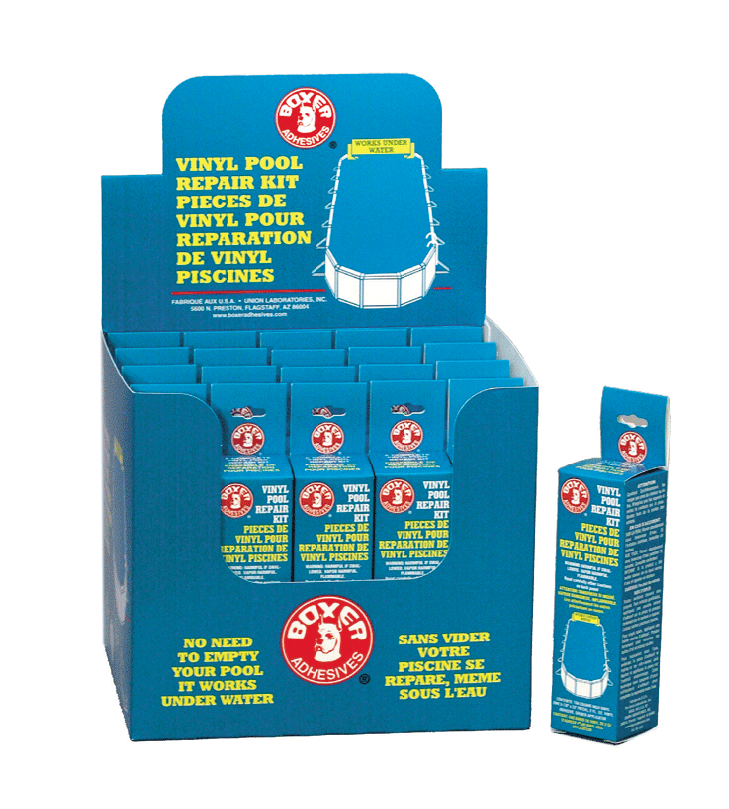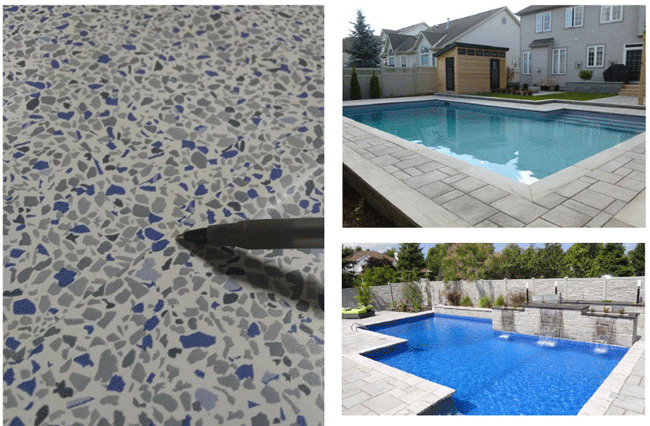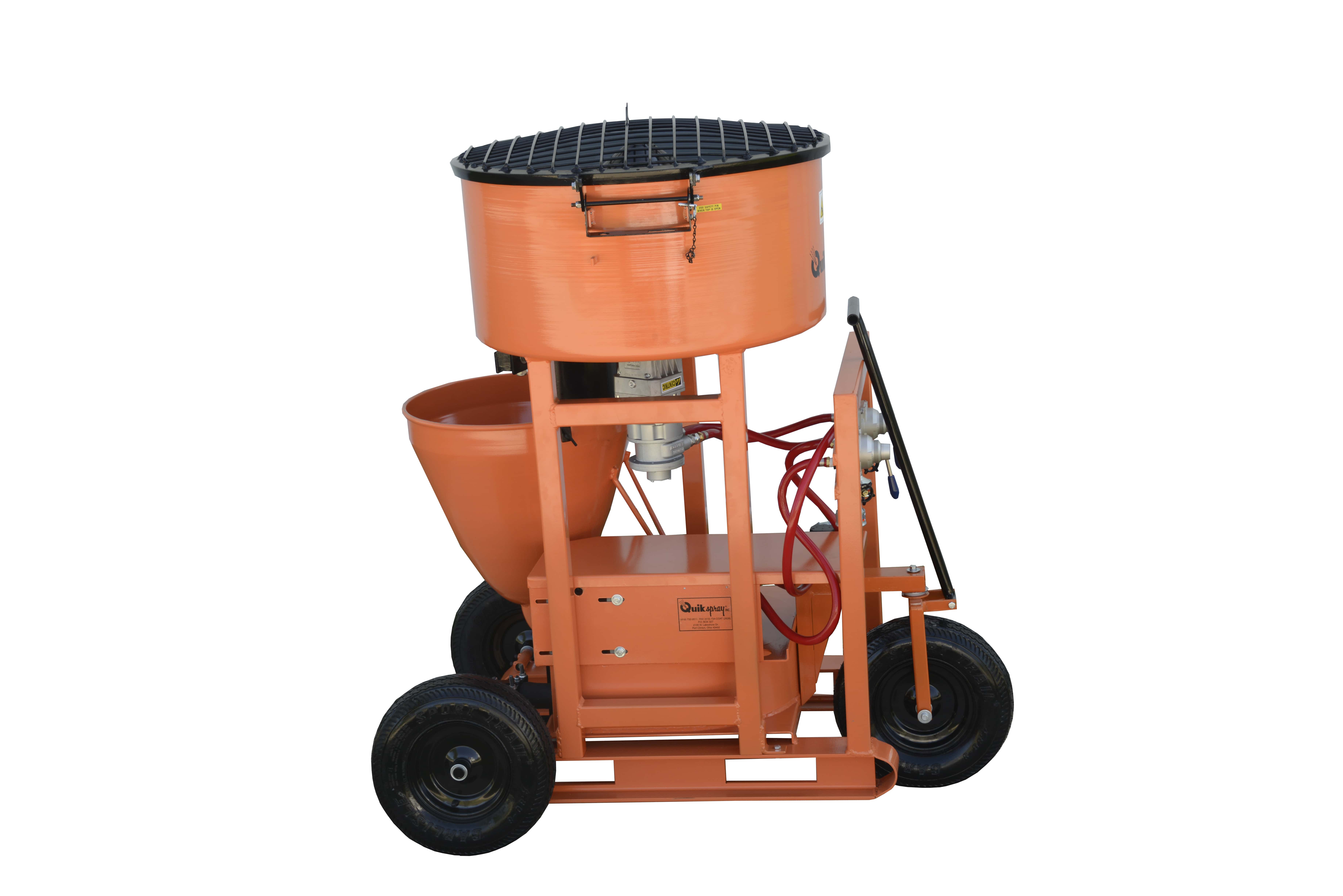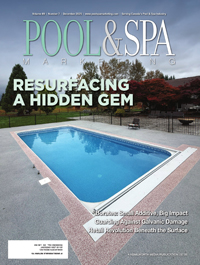Dealing with vinyl liner stains
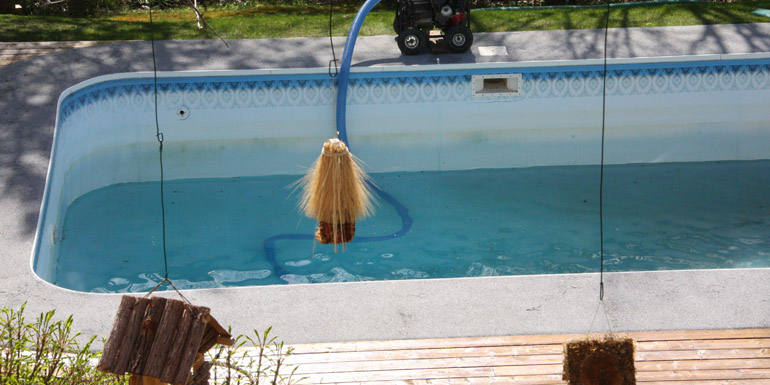
By Carl Flieler
Vinyl pool liners, which are protected by special additives and coatings, can withstand the extremes of sunshine, heat, cold and constant exposure to chemically treated water. However, even the highest quality liner is still subject to staining, discolouration and other unsightly symptoms if proper water balance is not maintained, debris is allowed to remain in the pool and if water treatment chemicals are used improperly.
Pool professionals are often plagued by black and pink staining, blemishes from discolouration and bleaching, and byproducts commonly known as ‘pool tar.’ This article will help pool professionals identify the source and cause of various vinyl liner stains, as well as provide tips for removal and how to avoid them in the future.
Black staining
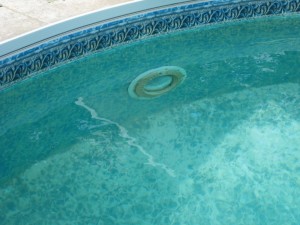
Black staining on vinyl pool liners can originate from a number of sources, which primarily fall into two categories: metal staining and black algae. Depending on the type of stain, different treatments are required to correct the problem.
Metals
Copper (Cu), iron (Fe) and manganese (Mn) will form oxides in chlorinated pool water and can precipitate out of solution, resulting in stains that are generally black, brown or grey.
These metals may be introduced into the pool via the water source, while other metals for example can dissolve from copper or brass fittings in the plumbing if the pH of the pool water falls below seven and becomes acidic.
Copper may also be present in some algaecides; however, most of these products now use this metal in a chelated or complex form, which remains in solution.
The presence of metal staining can be confirmed by treating a small portion of the stained area with a pH reducer to dissolve the metals. If it can be removed or reduced, the staining is a result of metal deposits and any remaining stains can be treated in a similar manner. Once stains have been removed, the pool water should be treated with sequestering or chelating agents to prevent a reoccurrence.
Algae
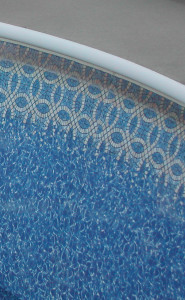
If the stain cannot be removed from the liner by the treatment specified above, it is likely due to an organic source such as black algae. Black algae are tenacious organisms with a chlorine (Cl) resistant coating and appear as a series of small black spots. To remove these stains, a number of steps must be performed.
First, algae spots must be brushed (using a nylon brush) to open up the algae coating. The water’s pH should be tested and reduced to the lower limit of the normal operating range (i.e. 7.2) to improve chlorine effectiveness. Then, super chlorinate the pool water (normally to 10 parts per million [ppm] of free available chlorine) and add a dose of a quaternary (quat) algaecide. Be sure to follow the manufacturer’s dosage recommendations as excessive use may result in foaming. De-foaming products for swimming pools are available should this occur.
Continue brushing algae stains to maximize chemical penetration, then vacuum dead algae to the drain once they have been killed and removed from the vinyl liner.
One day after super chlorinating the water, add a dose of a polymer algaecide (polyquat) as per the manufacturer’s recommendations. Polyquats are more expensive than regular quaternary algaecides; however, they are more effective at controlling resistant strains of algae. Once stains have been removed, resume normal chlorination and water balance. Remember, the best protection against algae growth is maintaining free chlorine levels between one to three ppm.
Keep in mind, normal water balance parameters should be held within the following ranges:
- 80 to 120 ppm total alkalinity (TA);
- 7.2 to 7.6 pH; and
- 200 to 300 ppm calcium hardness.

